Elizabeth Harrin's Blog, page 19
November 25, 2023
How to manage team conflict (& 5 strategies for conflict resolution)
Projects can be a hotbed of conflict. From the difficult stakeholder who wants to undermine the project’s success to a disagreement about a feature of a deliverable, project work lends itself to workplace conflict situations.
And project managers contribute hugely to that because we go out and look for it. We challenge leaders, we talk about risk and what might go wrong and we call people out on poor performance through project monitoring and control.
You could say we go looking for trouble.
That’s part of the job, though. Conflict should be a healthy part of any team’s development, and it’ a good way to challenge requirements and ensure that your business case and plans stand up to scrutiny.
So while you shouldn’t shy away from conflict, it does help to be prepared for it.
In this article, we’ll look at the causes of team conflict on projects, how to identify conflict and resolution strategies so you can all get back to work. If you prefer to watch videos instead of read, skip on to the videos in each section that summarize the article.
What is team conflict?This is how I like to define conflict:
Conflict happens when two or more people disagree and one of them (at least) decides to make an issue of it.
Team conflict is where there are differences of opinion within the team.
Differences of opinion are not always negative, but typically on a team you want everyone to end up pulling in the same direction. So we need to resolve the differences and get the team aligned to a common goal again.
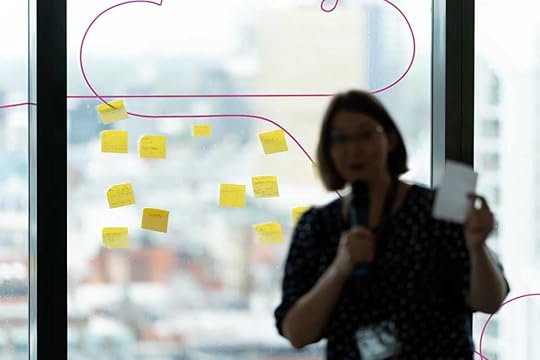 Conflict during the project lifecycle
Conflict during the project lifecycleFirst, let’s look at where you get conflict during the project life cycle and who is involved.
Below I’ve also given you some examples of what drives those difficult situations. Then you can be better prepared for the challenges when they come (because they will!).
Project management conflict examples in the Concept PhaseFirst up, the Concept or Initiation Phase. This is at the start of the project while you are working out exactly what is going to happen.
During this phase there’s a risk of conflict between:
The sponsor and users, for example about requirements or cost, or around agreeing the problem and the solutionThe sponsor and the project manager, for example around the requirements and how to get thereThe sponsor and portfolio management, for example about business case approval.In all of these examples you are going to be able to think up your own situations where conflict might arise based on what you see on your own projects. These are just ideas from my own experience and there will be plenty of other moments in a project where people don’t agree.
As we’ve said, that’s normal and not necessarily something to be worried about. In my experience, there are often more conflict points at the beginning of a project, partly because team members are finding their place in the hierarchy of the team and exploring how their contribution matters to the project.
Conflict examples in the Definition PhaseIn this phase the project is being fully scoped and planned. There are workshops, facilitated meetings, backlog grooming sessions and plenty of chat between team members — not all of it in agreement!
There’s a chance that you’ll see conflict between:
The project manager and team leaders, for example due to a difference of opinion about planning, around roles and responsibilities or around assigning risk ownership to people who don’t believe they are accountable for itThe project manager and sponsor, for example because once the detailed planning is done there may be a need to review scope.The project manager and suppliers, for example around commercial agreements.Again, these are only examples and you’ll probably have examples from your own experience that spring to mind.
Conflict examples in the Development PhaseThe Development, Delivery or Execute Phase (whatever you call it where you work) is where the bulk of the work is done and it’s here that you’ll see the most possibility for conflict.
You might not get it — but there is plenty of possibility! Hopefully, if the project is well-defined, with a clear goal and a set of stakeholders who are supportive of the mission, then the chances for conflict are lesser.
In uncertain projects, where there is a highly complex solution, where the solution isn’t known or the team is iterating the solution as they go using agile techniques, then you might have more heated discussions from time to time.
Watch out for sparks between:
The project manager and sponsor, for example due to changes to scope and at any key decision making point, for example, risk response plansThe project manager and team, for example around resource or task allocationThe project manager and team leaders, for example around resource or task allocationThe project manager and functional managers, for example around resource or task allocation (see a pattern?)The project manager and users, for example as a result of quality control and checking.In this phase you really want to deal with team conflict quickly because your project schedule can start to unravel if you let it go on for too long. There are tips for doing that later in this article: I’ll share the 5 common options for resolving conflict in the team.
Conflict examples in the Handover and Close PhaseYou’ve made it to the end of the project and now you’re handing over to business as usual teams and closing the project down. What could go wrong here?
Perhaps more than you were expecting! You’re at risk of project team conflict between:
The project manager and the users or sponsor, for example at the point of handover of deliverablesThe project manager and the operational team, for example as they might not want to receive the handover or be ready to take responsibility.Team conflict management should be on your agenda so you can tidy up any lingering awkward situations before you walk away from a project.
You don’t want to leave anyone with a sense that something is unfinished and it will be better for you too, knowing that you’ve done the best job you can to sort out the loose ends.
At any point on the project you could be trying to performance manage a colleague who isn’t making their best contribution. Gets tips for managing a team member with a negative attitude here.
What causes conflict on project teams?So why do you get all this conflict on project teams? I have mentioned some causes of conflict above, but in 2012 I did some research into this at an event. It wasn’t incredibly scientific, but I asked the people who came to my presentation what caused conflict on their project teams.
The answers, as you would expect, were a mixed bag. A couple of points stood out clearly, and the root of nearly all the potential issues and clashes were unexpectedly to do with people.
We collected responses on sticky notes and there were loads. It was almost as if people couldn’t help themselves but come up with situations where conflict was rife on their projects.
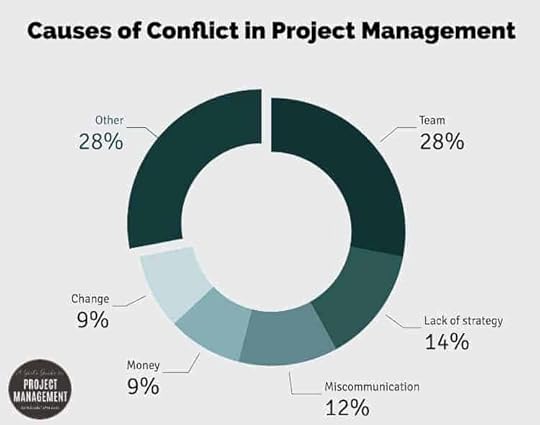
Many types of conflict in teams have their roots in the relationships between team members. The team accounts for over a quarter of all conflict causes. Some of the examples people gave included:
Lack of clarity about rolesPersonality clashesEgoLack of respect.Take those out, and you’ve hugely reduced the likelihood of conflict on your project team.
Lack of strategic direction and leadership was another biggie, with 14% reporting that was a cause of conflict on their projects. Miscommunication and misunderstandings in the team came in at 12%, followed by budget issues and responses to change both taking 9% of the responses.
The ‘Other’ segment represents nearly 30% of responses and here there were a multitude of themes including:
Aggressive timescalesLack of benefitsLack of knowledgeNo project management method or structure to underpin successConfused requirementsThe customer’s expectations.So we know when conflict in project management might happen in the lifecycle, and what causes it. But how do you know what to look for so you know how to identify conflict when it happens?
Identifying conflict in the workplace Shawn Kent Hayashi
Shawn Kent Hayashi“Many people do not allow themselves to see or recognize conflicts in their conversations because they do not know how to resolve conflicts,” says Shawn Kent Hayashi, of The Professional Development Group. “As project managers, we can help facilitate the discussion, as long as our own fears of past problems that have occurred during conflicts hasn’t shut down our awareness that a nagging conflict exists.”
She explains that there are several types of conflict:
Me with myselfMe with anotherBetween two others, and I am caught in their conflictA project team where people are not in agreement and have varying ideasOrganizational conflict across departments.When you know where to look, you can spot conflict in all kinds of places!
“If we do not admit an issue we cannot resolve the conflict,” says Shawn. “Instead, we sweep it under the carpet or ‘wear blinders’ as a symptom of feeling fear, not thinking we can handle a conversation to discuss the conflict and create a solution.”
The most important thing, then, for identifying conflict at work, is to be open to the fact that it might be happening.
Still not sure if there is conflict on your project? Try to identify conflicting goals between stakeholders. If you find expectations misaligned, that’s a conflict waiting to happen.
If you acknowledge conflict is possible, even if you know it might put you out of your comfort zone to deal with it, then you will be more open to noticing and doing something about it.
You’ve already spotted it, so you can jump in and help get it resolved now.
One of the most common causes of conflict is conflicting priorities.
Conflicting priorities happen when:Where you are juggling multiple demands on your time.Where your stakeholders have differing expectations of you and the project.Stakeholders may have want different things from you and the project, and that needs to be ironed out. You can’t have one stakeholder expecting the deluxe version in blue and another one expecting the budget version in green.
The project can only deliver one option, so those differing expectations need to be aligned.
That could be done by one stakeholder capitulating. The other gets what they want. Or you could have a compromise. There are some other options for team conflict resolution methods below.
Resolve by focusing no consensusWhat are the conflicts? Is it conflicting requirements within the project or is your time under pressure because you are doing too many tasks/projects at the same time.How do you see the priorities?Who will validate those priorities? Talk to your sponsor, project board, or your manager. They will either validate how you see the priorities, enabling you to focus on what the true priorities are, or reject the way you see them (in which case they should offer alternatives.)Team conflict resolution: 5 ways to get through disagreementsOK, let’s say there is some conflict on the team. Project management and conflict resolution go hand in hand — being able to manage conflict is a core skill for project managers.
But what does resolving conflict actually look like in practice? Here are some project management conflict resolution strategies. Actually, they will work for non-project conflicts too!
There are also team conflict examples in the sections below so you can see how these scenarios play out in real life.
The Thomas-Kilmann Conflict Mode InstrumentThe Thomas-Kilmann conflict mode instrument (TKI) is a way of working out your preferred style for handling conflict (not just at work, but generally we see it used in workplace settings).
It’s a useful tool for understanding a range of options available to you once you’ve identified a conflict situation. You have to deal with it — TKI gives you a selection of ways to do so.
Developed by Thomas and Kilmann (you guessed that, right?) in 1974, it’s a questionnaire that asks you to identify how you naturally react when faced with the opinions or concerns of two people that don’t align.
It’s a way of identifying your own natural reaction and response when you are in a conflict situation with someone.
There are two things I like about the TKI:
You get a vocabulary that helps you define your default style when facing conflict, but also helps you understand what the other options are.You don’t have to do the questionnaire to find the model useful. The basic principles can be understood easily and applied to your project at any time.The TKI looks at two different aspects of your approach to managing conflict.
Assertiveness: How far do you take your own concerns at the expense of others’?Cooperativeness: How far do you go to satisfy the other person’s concerns?Basically, the model forces you to think about how far you will go to win and how much it matters to you that other people may have concerns that need to be met.
If you want to learn more about TKI and conflict management on projects, Dr Mike Clayton has a detailed short online course about it: Check out Dealing with Conflict on Projects.Tip: Talk to your HR team to find out if they have access to the formal TKI assessment. Can you take it with your team and compare styles?
The next part of the TKI instrument is the five different modes for responding to conflict. These are:
CompetingAccommodatingAvoidingCollaboratingCompromising.Let’s dive into those options next.
The Avoiding Conflict ModeAvoiding is where you don’t engage in conflict at all. It’s an unassertive approach, because you aren’t discussing or actively doing anything, and uncooperative, because you aren’t helping the other person either. It’s the ‘do nothing’ approach.
It might sound like it would never work but it can be effective if you use it in moderation — and in the right situations.
Example: Two colleagues are arguing loudly. Their noise is disturbing other people in the open plan office. You talk to them calmly and tell them that when they’ve calmed down — both of them — you can help them work out some next steps. You suggest that one of them cools off in the meeting room, and the other goes to the staff kitchen area.
What’s happened here is that you haven’t fixed the conflict. The team members still have something they need to resolved. You don’t know the details yet, and it is definitely worth finding out! You still need to address the underlying issue.
If you don’t do something, it’s possible the problem gets worse over time.
Project management conflict resolutions strategies you can use that fit into this Avoiding mode:
Postpone the conversation until there is a better time to have itMove away from a threatening situation — hopefully you don’t find yourself in many of these at your workplace!The Accommodating Conflict ModeAccommodating is the opposite of Competing (more on that in a minute). This is what happens if you are directed to do something. For example, if your project sponsor directs you to take a certain course of action to handling a risk.
It’s an unassertive response but it shows high cooperation because your personal preferences are overlooked and overridden.
You might think that if you end up in this situation, you’ve ‘lost’ but sometimes it isn’t worth winning.
Example: A project team member checks their annual leave requests with you and you notice that a key task they are scheduled to do clashes with their time off. You’re unhappy about them taking the time off, and they explain that they have already agreed a colleague will take over the work. It’s not worth arguing this point as the work will still get done — so you agree to their leave request.
Be careful how often you use this strategy as if you capitulate too often, people might start to see you as a walkover.
The Competing Conflict ModeCompeting is also called Forcing.
It’s high up on the assertive scale and it’s uncooperative — just as the name suggests!
This is where you force the other person to take on your solution. They ‘lose’.
You can only really take this approach when you have some kind of legitimate power that specifically relates to the situation you’re in. Examples of legitimate power include:
You are more senior than the other person in the management hierarchyYou have control of something relevant to the situation, like the budget or resourcesYou have expertise relevant to the situation that the other person doesn’t have.Example: You’re working on a building site and a colleague says they don’t want to wear the health and safety equipment. In this situation, you have to force the team member to comply with the regulations.
Conflict resolution strategies you can use in these situations:
Telling someone else what to doIssuing a written directive that tells someone else what to do.However, you might not feel that you have ‘resolved’ conflict if you use these strategies. You’ve made a decision and moved a project on, but you’ve probably ruffled some feathers at the same time. Forcing is really only something to use when you really have to.
The Collaborating Conflict ModeCollaborating. This is an assertive way of resolving problems. It’s also very cooperative.
Neither party tries to avoid the conflict or ‘win’. Instead, you work together to look into the problems and come up with solutions where you both get what you want.
This is often seen as the ‘best’ way to manage conflict, but the ‘best’ way can be any of these. If my young son runs towards a busy road, collaborating isn’t the approach I’m going to use!
All of the conflict resolution strategies can be useful to you in the right situation.
The Compromising Conflict ModeFinally, compromising. As you’d expect, both sides make concessions so that you can reach an agreement that unlocks the conflict.
It’s different from collaborating because neither party gets exactly what they were hoping for, but at least you reach a position where you can move on.
There are more strategies for managing team conflict in the video below.
Understand your roleConflict happens at work. But it’s not always your battle to fight.
Think about who is going to feel let down if you step in and are seen to be taking sides. Often, as managers and leaders on project teams — and more broadly in the workplace — we need to be neutral.
Understanding the boundaries of your role as a project manager can help you get the team to a resolution. Basically that means understanding it’s not always your job to resolve conflict.
You can facilitate the conflict resolution, but unless you are one of the parties ‘in’ the conflict — for example, if there is conflict between you and a line manager — then it’s not your role to find the solution.
Key TakeawaysConflict management for project managers is part of the daily engagement with stakeholders and the team. Conflict can happen at any point in the project lifecycle.It can happen for numerous reasons, often to do with misunderstandings and misaligned expectations.There are many ways to resolve conflict at work. Try a few of the techniques mentioned here and arm yourself with some strategies that work for your personal style.Deal with conflict as soon as you can to stop it becoming a larger problem.They own the disagreement. You own the facilitation of the resolution.


I’d like to thank the team at Genius Project for sponsoring this article. Genius Project is a fully-featured project management software tool that includes everything you need to support defining, developing and delivering your work successfully with collaboration features to engage your team at every step of the way.
Pin for later reading:
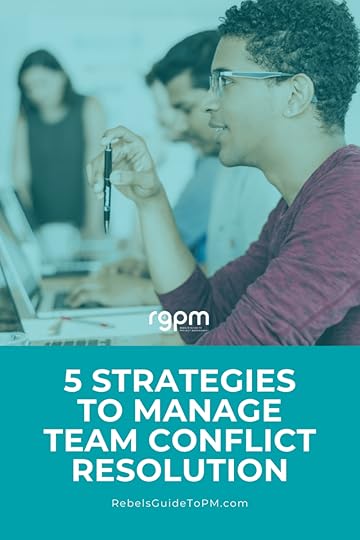
This article first appeared at Rebel's Guide to Project Management
Smart glasses: The future of work productivity?
After decades of novelty releases that never quite hit the mainstream, wearable tech is finally having a real moment in the sun. The market has been primed thanks to years of good offerings from the smartwatch department, and with the proliferation of augmented reality (AR), smart glasses are poised to be next to take the world by storm.
If you don’t personally have a smartwatch, I bet you know someone who wears one to work. Could we soon be seeing smart glasses in the office?
While widespread adoption is still a way off, the Focused inSights Smart Eyewear 2023 report found that more than a third of adults intend to purchase smart eyewear this year, with early tech adopters and those in urban communities notably likely to make the purchase.
Shiny new tech is always a topic of conversation, and there’s a lot of chatter around AI in project management at the moment. For project managers, in particular, smart glasses have the potential to change the way you juggle tasks, access and visualize data, and communicate with teammates and stakeholders.
But first, let’s dive into the revolutionary tech powering these specs.
The technology behind smart glassesWith the help of nanotechnology, smart glasses integrate a computer’s key functionalities into eyewear lenses, featuring a digital display that users can view alongside what they see in real life.
Today, modern iterations like the Ray-Ban Meta smart glasses are integrated with livestream and artificial intelligence technologies, plus immersive directional audio and voice command capabilities for seamless hands-free communication. Take calls direct from your glasses.
And yes, they’re compatible with prescription lenses, because who needs a pair of glasses that are just for show?
If you’re a project manager who needs to stay connected wherever you go, the eyewear’s Meta AI conversational assistant can send messages, control features, and find quick answers to questions that pop into your head as you go about your busy day.
Think ChatGPT and a personal AI assistant, but built into your glasses.
And if you need to keep track of a project’s physical progress, it has an ultra-wide 12-megapixel camera for quick snaps and 1080p video recording – great for capturing ‘in progress’ shots of your construction site, or even simply capturing your team in the office.
(We’ve recently put together a round up slide deck of achievements from our team in the past 12 months and realized we hardly have any photos of any of the work we’ve done – that’s going to change next year!)
Project managers who spend extensive time doing fieldwork, such as those involved in construction, live events, or supply chain management, could benefit from smart eyewear that makes accessing information easy, because it means you don’t have to carry a tablet or laptop around with you.
The Vuzix Ultralite S glasses deliver hands-free, wireless connectivity to the information from the wearer’s smartphone or smartwatch in crisp, see-through imaging. This allows project managers to quickly refer to relevant workplace data and messages from colleagues while onsite.
Plus, the virtual platform can be customized for different styles and technology configurations depending on your needs.
Smart glasses for project managementThe most promising application for smart glasses in project management is remote collaboration. The ability to work as a team and facilitate demonstrations that show a person’s exact, real-time point of view can aid greatly in projects that require complex, step-by-step support.
The Meta Smart Glasses will enable you to share these live AR experiences, creating leaner, more efficient workflows. That’s helpful if you’re planning training or need users to interact with a prototype before getting their hands on the final model.
In industries requiring precision and efficiency, such as manufacturing and logistics, project managers can use smart glasses to access quality control data on project deliverables to ensure they meet the expected standards. This helps to pinpoint and fix issues early before they cause significant problems, saving money and time.
In environments where safety is paramount, smart glasses with advanced directional capabilities like the Vuzix Ultralite eliminate the need for project managers to hold extra devices or printing materials, reducing workplace accidents.
We’ve covered implementing AI in projects before on this blog, and how AI can automate administrative tasks to free up time for high-value activities. With AI improvements in upcoming versions of smart glasses, project managers may soon be able to perform on-the-go calculations and generate brief reports without ever cracking open a laptop.
AR smart glasses are set to reshape the landscape of the various industries that project managers operate in, empowering them with tools to navigate a hectic and high-stakes workplace routine. Whether improving productivity, streamlining communication, or minimizing human errors, this wearable is set to become an indispensable part of any project manager’s routine.
Interested in how tech is shaping project management? Read these next.
Generative AI for project managers
How project management is shaped by the Internet of Things
Project management trends you need to know
This article first appeared at Rebel's Guide to Project Management
November 20, 2023
What’s The Future of Project Management in 2024 and beyond?
What is the future of project management? Let’s look ahead and see what the next 10 years will bring for project management software, jobs, and the role itself.
Does project management have a future?If you’re asking yourself if project management has a future, then I think you might be asking the wrong question! The question is: what kind of future is it going to be for project professionals?
The project management role isn’t going anywhere. The World Economic Forum’s Future of Jobs report 2023 predicts a growth in project management jobs. It’s a key role for business transformation, and there’s no signs of that stopping any time soon. If you’re in Indonesia or Malaysia, the outlook’s even better!
More and more knowledge work being run in a projectized way, which means more and more people doing project management as part of their day job.
So will we need ‘professional’ project managers in the future? People who just do managing projects?
We will. There will always be complex and complicated projects that need a steady hand and a particular set of skills to bring to a successful delivery.
As the business environment gets more and more global, digitalized, uncertain and fast, companies need to quickly adapt and bring services and products to market. Project managers are the people who can make that happen.
Future of project management: JobsPMI says that by 2027 employers will need nearly 88 million people in project-related roles. The global demand for project managers is increasing.
That’s a stat widely used in the past few years, but job ads and the market, and my mentoring clients, and other research… it’s all pointing in the same direction.
The role of the project manager has long been shifting away from someone who can tick off tasks as complete on a Gantt chart and towards a strategic leadership position for effecting change in an organization.
Project managers still provide an irreplaceably human combination of leadership, integration of specialists, and ethical behaviour.
~ Arup, Future of Project Management
We are a long way from the death of project management.
Hybrid project management (or how we always did it)One of the project management trends we are seeing is the acceptance that hybrid management approaches are the way forward.
I think hybrid project management has been around for ages. It’s certainly something I’ve used: ongoing iterations for development with significant customer involvement in the deliverables at all stages, but managed within a waterfall governance structure and life cycle.
Frankly, hybrid isn’t new. We don’t need to call it ‘wagile’ or ‘agifall’ to know that tailoring an approach to best fit the needs of the project is good thing.
Having said that, the perceived rise of hybrid project management is good news because:
Projects are more complex than everThey involve many more individuals: more than could comfortably fit in a multi-skilled Scrum teamMost large organizations aren’t geared up to run their whole operation in an agile way.The future of project management needs to be more agile. According to research by IPMA, only 47% of organizations are using agile approaches for delivery.
And we wonder why we can’t respond to change fast enough.
The future is flexibleThe way we run projects has been evolving since we started out formalizing how work gets done in a project setting.
As our environment gets more complex, uncertain and – dare I say it, political – we’ll need more and more tools to help deliver projects in that kind of environment.
For example, project managers need to respond to:
Stakeholders with shorter attention spansStakeholders with competing demands on their timeComplex and unknown technical situationsComplex and unknown geopolitical and socio-political situationsHigher staff turnover (no such thing as a job for life any more)Greater demands being put on management teamsCollaborative contracting and partnering with suppliersIncreasingly complex regulation and governance.Project managers need options that will help them deliver. And that means being able to choose from predictive, iterative and hybrid ways of delivering the work and blending what works to get the best results.
The future of project management relies on more professional judgement and fewer textbook answers.
Project management software: The next generationThe future of project management software is interesting. I review a lot of PM software tools and there are companies now making massive leaps into integrating big data, automations, machine learning, AI and more into the way they collate, present and make it possible to use large data sets.
Take Otter, for example, the online transcription tool I use for managing meeting output. It saves so much time and helps with inclusive meetings and accessibility.
Our Pick Otter.aiOtter is a note-taking app that also records in-person meetings. I have a paid version of Otter and it is the tool I use myself.
[image error] Buy Now We earn a commission if you click this link and make a purchase, at no additional cost to you #adHere are some considerations for future technology – project management style.
4 themes for the future of project management softwareBlockchainArtificial intelligenceMobileAnti-workaholismBlockchainWe will need to know about this and how we can harness digital assets to streamline infrastructure, logistics and data tracking on projects.
Over 80% of organizations report hiring someone with blockchain skills or planning to do so in the next 12 months. Could that be you?
AIAI is already a feature in some project management tools and robotic processing will help automate routine PMO tasks. According to Deloitte, 70% of organizations are exploring or using AI.
Tools like Tom’s Planner, RAIDLOG, Nimble and enterprise software are integrating generative AI and your own project data sets to surface useful insights and save you time.
While I still remain positive about the role of the project manager, I think other jobs you routinely interact with, like system testers, could be more at risk of being automated.
The use of AI in project management tools means the human’s role is elevated into a knowledge leadership position and is freed up from doing the grunt work of tasks like system testing, taking minutes or updating logs – taking the tools already in use to a whole new level.
MobileDevices will become more powerful, but currently we still don’t have all the functions of PM software available in most of the equivalent mobile apps. That will have to change.
Anti-workaholismTools are getting smarter at helping us balance the needs of work and life, and to stop us falling into the trap of working more, just because we can.
You know those pop ups in Outlook that invite us to NOT send an email at the weekend and to schedule it for the recipient’s working hours? That’s what I mean.
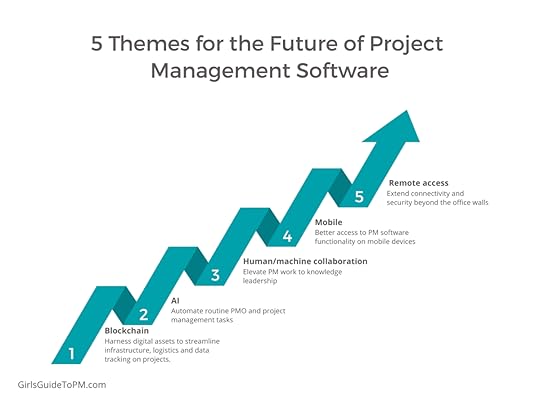 Resource management: The Continuous Challenge
Resource management: The Continuous ChallengeFor all the talk about the future of work and how project management is going to evolve, I still think we have some challenges with how we work now.
For example, resource management and capacity planning are not things that are easy to do. I have been talking about this for years.
Project managers lack the tools to effectively manage workload across teams because the solution required relies on enterprise adoption of software. And many organizations won’t/can’t do that.
Make everyone do timesheets and resource planning just so project teams know who’s available to work? No thanks.
Unfortunately, unless we get strategic buy in for managing projects in a professional way, the resource planning challenge isn’t going anywhere soon.
Projects on the Board: The next professionalsArup’s collaborative thought leadership piece into the Future of Project Management talks about every top 100 firm has a project management professional in at least one C-suite role by 2030.
Maybe this role will be a Chartered Project Manager.
If we are serious about improving project delivery and delivering strategically-aligned projects that generate business value, we need organizations to take project delivery seriously. And that means elevating the discussion beyond senior managers to the board of directors.
The Chief Project Officer role is (in my opinion) long overdue already. With executive oversight from people who actually get it, projects would have more chance of completing successfully – and fewer vanity projects would get started.
Digital skills: The next competency for project managersDigital skills are important for the project managers of the future (and – in all honest, those of us working as PMs today).
CBI’s report into what’s required to create a world-leading innovation economy says that upskilling people with digital skills is essential. The digital skills pipeline isn’t that great at the moment and they suggest more needs to be done to encourage greater ambition in that arena.
The digital skills important to project managers are:
Data analysis, analytics and managementHarnessing generative AI and being a ‘prompt engineer’ for your own workSecurity and data protectionLegal and regulatory complianceOnline collaboration and leadershipKnowledge management Data-driven decision making.Add into all of that a very non-digital skill of resilience. With all this change, disruption and digital-ness, the ability to cope with the ups and downs of the job is going to be essential.
 The role of project managers in the future
The role of project managers in the futureThe future of project management is bright. There remains strong demand for people delivering change.
I believe much of the mundane stuff of being a project manager will go away eventually, as our tools tap into the advances in technology that are already out there.
PM will move from being seen by some execs as an administrative function and towards the strategic partnership that it has the potential to be in every business – not just in those enlightened firms with high levels of program management maturity.
Skills for project managers have been shifting towards the ‘soft’ stuff for years. That’s going to be even more important with the way the future of work is going.
Project managers will need to be the humans on the team. We’ll need to connect with others with the skills that you can’t get from your robot colleague:
EmpathyStrategic thinkingFunCreativityMotivation and persuasionThoughtful customer serviceListening.Looking forward: SummaryProject management evolves to meet the needs of today’s workplace problems. We’re facing the kinds of evolution we’re seeing at work because the nature of the work itself demands it.
Efficiency is more than having the right process. It’s also having the capacity as a team – not simply as a project manager because the role is getting too big for one person to do everything – to lead increasingly complex work and solve difficult problems almost daily.
We can do it. We are doing it. And the best project managers are improving how they do it every day. Are you?
Pin for later reading

This article first appeared at Rebel's Guide to Project Management
November 16, 2023
Implementing AI in your projects: how to start and improve
If you are like many project professionals, you have likely worked with artificial intelligence (AI) in some capacity. In our annual global survey, one in five (21 percent) respondents say they are using AI always or often in project management.
Whether you’re already comfortable leveraging AI for projects, or you’re completely new to AI, one thing is certain: the rise of ChatGPT and other commercial generative AI has greatly accelerated AI’s workplace infiltration.
For project professionals, this means two things:
AI is an extraordinary tool to automate administrative tasks to free up time for high-value activities, but it can even help enhance your interpersonal skills like collaboration and leadership – we call these “power skills.”Project professionals will likely be tasked with leading corporate digital transformation efforts to implement AI tools at scale.The need is clear: project professionals must start (or continue) adopting AI tools – and GenAI tools in particular – into their daily work.
In this article, we will cover strategies to usher in this adoption and certain tasks that can be augmented with AI. Note that the platforms we recommend using include ChatGPT-4, Bard, MS Copilot, and Smartsheet; however, there are many tools to choose from, each with specific benefits, drawbacks, and limitations.
How do I begin automating tasks?For any professional looking to adopt AI, the logical first question is, “Where do I begin?” For project professionals, we recommend exploring AI tools by first understanding what project tasks and deliverables can be automated easily and without risk.
These tasks can be reviewed under two main dimensions: complexity and degree of human intervention required.
First look at the complexity of the task, including how many variables are involved, what data is involved, and if the task requires specific project management knowledge.
Second, consider the degree of human intervention needed to get the desired result of the task – that is, if you asked AI to do it for you, how much additional work would be needed to ensure the output is quality?
The more complex the task – and the more human intervention needed – the harder it is to automate, at least until you have a better understanding of the AI tools available.
Free! Generative AI Overview for Project ManagersA quick and easy course aimed at project managers. Specifically focused on generative AI applications in projects, mainly ChatGPT.
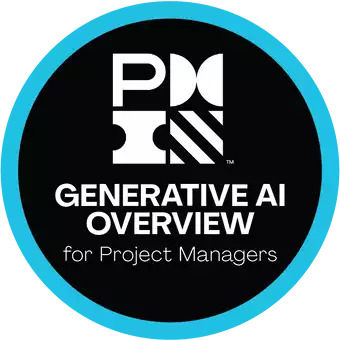 Learn more The AI spectrum for tools
Learn more The AI spectrum for toolsUsing these two dimensions as guidance, project professionals can decide how to use AI tools on a spectrum that ranges from automation to assistance and, finally, augmentation.
The first level on the spectrum – automation – is the recommended starting point. Project professionals can automate tasks that are low complexity and require little human intervention in their final output. Examples include:
Generating reportsAnalyzing documents with multiple types of dataSummarizing meeting notesOrganizing information into company templatesPerforming calculations.As project managers get more practice using AI tools for automation tasks, they can create standard prompts they can reuse across projects and even by other team members, since these tasks generally do not need highly experienced project professionals to assess and verify the results.
What if I am more experienced?As you continue experimenting with AI, you will be able to leverage its benefits for more complex tasks that require more human intervention.
The second level on our spectrum is assistance, where project professionals can leverage GenAI to complement analyses, create AI-driven first drafts of certain deliverables, and iteratively build expected outputs for certain tasks.
Examples of tasks that can be enhanced using AI at this level include:
Creating a first draft of a cost-benefit analysisPerforming a data analysis to be used on a scope change recommendationCreating scheduling plansPerforming a risk analysis.The resulting outputs will likely require moderate intervention from yourself or another experienced project professional to ensure they are complete and accurate – at this stage, the output from AI tools cannot be considered complete without human refinement.
Finally, the last – and most advanced – level is “augmenting,” where project leaders can both enhance existing capabilities and develop new ones.
This approach helps you perform more complex, strategic tasks specific to the organization or project, such as creating outstanding business cases for projects and supporting complex decision-making with many interdependencies and variables.
Ultimately, humans will still guide and perform most of the work, but they can leverage GenAI to gain insights and perform specific tasks using multiple interactions with the tool.
At this level, it is likely that the individual’s depth of experience and knowledge about their organization, industry, and project management will influence the quality of the final outcomes.
Using AI beyond deliverablesOur Pulse of the Profession research identified four power skills essential to helping organizations transform: strategic thinking, problem-solving, collaborative leadership, and communication.
All of these are human traits that, to some degree, can be augmented by AI:
Enhancing strategic thinking: GenAI is familiar with strategic models and constructs. Even for those who do not fully understand their organization’s strategy, GenAI can flesh out what strategies for organizations like yours may look like, allowing you to include connection points to your organization’s strategy in your planning and deliverables.Cultivating better collaboration: Before brainstorming, having GenAI produce results for brainstorm questions can allow you to bring initial thinking to your team, allowing you to skip the “lowest common denominator” brainstorming that can predominate initial meetings.Giving new perspectives on problems: Problem-solving in project management requires diverse perspectives, and GenAI can offer a new perspective that can solve parts of problems, perform background research, and suggest hypotheses.Improving communication: GenAI can be used to help streamline communication across different levels, including stakeholder communication management, and automate simpler communication processes. It can also evaluate content to help convey the right narrative and perspective in more sensitive and complex messages.These use cases can be used by professionals at any level of understanding with AI. However, this “perspective” offered by GenAI platforms is exactly that, a perspective.
Keep in mind that a human will still need to gather all information to find the best solution to any problem, and a project professional must always provide the “human touch” to communication and strategic thinking.
How can I get started?I recommend playing around with free AI-enabled tools to determine their use cases and benefits. You can also assess the projects you are working on to determine where you can begin implementing AI in risk-free ways.
For those looking to dive deeper into AI-enabled project management, PMI continues to help project professionals in their mastery of AI. PMI also has a free foundational AI course, complete with information on how to strengthen inputs for GenAI tools.
AI is poised to continue its meteoric rise, and project professionals who fully embrace AI will see career advancement opportunities. The time to get started is now – even if that means just experimenting.
This article first appeared at Rebel's Guide to Project Management
November 2, 2023
Resource Forecasting Guide for Project Managers
Managing resources in professional services firms is crucial for maintaining sustainability and achieving anticipated employee performance goals. But unfortunately, many resource managers have to rely on approximation and guesswork because they don’t have the right tools and techniques.
In the dynamic business environment, companies need accurate estimations for timely decision-making and futureproofing workforce availability against market volatilities.
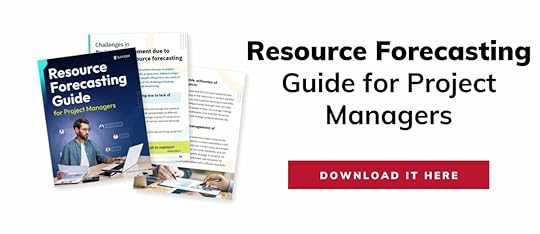
Resource forecasting helps managers answer questions like:
Do I have sufficient capacity and skill sets to take on additional projects?What should I do with the excess capacity without sufficient work to engage them?How can I stay within the budget with the available resource mix?A robust resource forecasting model can answer these queries and help businesses stay ahead of the curve. In addition, it provides actionable insights for improving profitability by maximizing billable resource utilization.
In this guide, we will learn the critical aspects of resource forecasting in project management. Let us begin with the basics.
What is resource forecasting in project management?Resource forecasting predicts various project resource metrics over a specific period, such as demand, supply, project vacancy, on-the-bench, and project resourcing costs in advance.
Resource forecasting is essential in project management to predict the future resource requirements in an organization to complete projects successfully. It is a step-by-step process that project managers can implement to estimate and allocate resources effectively.
It provides early warnings, which help businesses to be proactive and implement preventive measures to avoid resource-related roadblocks in the project.
 Resources can be more than simply people, but normally, if you hear someone talk about resources, they are talking about people!What is an example of resource forecasting?
Resources can be more than simply people, but normally, if you hear someone talk about resources, they are talking about people!What is an example of resource forecasting?Let’s consider an example of resource forecasting in project management.
Suppose a project manager has an upcoming project for website development and design. The project has a defined timeline of six months, and the resources involved are developers, testers, UI/UX designers, analysts, etc. The company wants to accurately forecast and allocate resources to ensure smooth project execution.
The first step is to clearly define the project requirements. This includes understanding the scope, objectives, deliverables, and timeline of the project. Next, the project manager and the team members identify all the tasks and activities required to complete the project.
Based on the identified tasks and activities, the team assesses the resource requirements for each phase of the project.
Using appropriate forecasting tools, managers determine the number of resources required in each phase, identify peak resource demands, and predict any resource shortages or excesses.
By following these steps, the company can effectively forecast and secure the resources for its mobile application project. This ensures that they have the right resources in the right place at the right time, leading to improved project outcomes and successful delivery.
Let’s move on to understand the significance of resource forecasting on the smooth progress of projects.
Why is resource forecasting important in project management?Before projects kick off, a robust forecasting process ensures they are suitably staffed and equipped to respond to unforeseen circumstances during the entire lifecycle.
It also estimates the workload, skill requirements, and project financials, enabling organizations to achieve profitable resource utilization.
Enterprises fail to deliver projects on time and within budget without the right forecasting tools.
It also results in low client satisfaction and jeopardizes the firm’s reputation.
This is how resource forecasting is essential for project managers.
What are the advantages of resource forecasting?The significance of efficient resource forecasting in project management is profound. It facilitates effective resource allocation and leads to the success of projects. Additionally, these are some of the critical benefits of resource forecasting in project management, which we’ll discuss below.
Reduces project cost significantly across the organizationResource costs are the most significant part of the expense for most businesses. The best way to keep this under control is by making sure that the right resources are available at the right time with the help of timely forecasting.
Even though employees are assigned to the project, it does not necessarily translate into more revenue for the business. They could be under-skilled or overqualified, affecting delivery or overall project cost. With their advanced capabilities, modern resource forecasting tools can help businesses significantly improve their profitability.
Deloitte Global Cost Survey reveals, “Cost reduction is the most significant initiative for any business.”
Maximizes resource utilization for billable and strategic workResource utilization is one of the most crucial KPIs of resource management. However, engaging all the resources in various activities doesn’t ensure profitability, as they could be working on non-billable or mundane BAU tasks.
Forecasting enables you to gain foresight into non-billable, billable, and strategic work ahead of time. Resource managers can improve profitability by periodically mobilizing resources from non-billable to billable and strategic projects. It helps eliminate under and overutilization of resources.
Enables effective management of pipeline projectsLack of visibility into the sales pipeline results in the eleventh-hour scuffling for competent resources. Resource forecasting helps plan for the potential project demands in the opportunity or approval sales pipeline.
Forecasting helps in resource capacity planning to avoid last-minute hiring and project delays. If there is an open position for niche resources, implement an out rotation and backfill strategy in advance. Resource forecasting also reduces unwanted cost escalation by making the right hiring decisions ahead with sufficient lead time.
Controls excesses/shortages of resourcesAn efficient resource forecasting tool enables you to perform multidimensional capacity vs. demand analysis based on role, department, team, location, skills, etc. It helps identify short and long-term resource excesses or shortages and proactively bridge the capacity gap.
Resource shortages can be controlled by providing training and hiring a permanent or contingent workforce. On the other hand, bringing forward project timelines or selling excess capacity mitigates the problem of excesses. Resource forecasting also minimizes bench time by providing training or shadowing opportunities.
Eradicates project planning bottlenecksTo organize the teamwork into manageable sections, the project manager divides the project into component tasks and creates their dependencies. It is known as the work breakdown structure and is designed to meet the project objectives and create the deliverables.
Due to their dependencies, delays caused by a critical resource’s unavailability in completing their work can delay other tasks and meet milestone deliverables. Subsequently, the project fails to deliver on time and within budget.
Resource forecasting makes the right resource available at the appropriate time.
Manages project financials to stay ahead of the curvePeriodically monitoring critical financial indicators such as cost, overheads, revenue, and profit margins ensures the project budget is on track. In addition, you can control project resource costs in advance by comparing the actual spending against the estimated budget.
Forecasting project financials helps you to improve future estimations and align them to reality. It also tracks shared resources working on multiple projects to adjust the resource mix for increasing revenue.
Plans proactive hiring and reduces benched resourcesForecasting project resources provide visibility for a workforce ending on the bench after a specific date. Additionally, it helps minimize bench time by proactively looking for appropriate tasks before resources are rolled off from projects.
Forecasting project vacancies across the enterprise enable the allocation of appropriate benched resources. Forecasting resources required also improves billability by facilitating training or shadowing opportunities for benched resources to assign them to projects quickly. You can also proactively make hiring decisions to address any resource shortfalls.
Now that the benefits of resource forecasting are clear, let’s look at the challenges in predicting resource needs.
Challenges in resource forecastingMarket volatility and sudden changes in project demand can cause an imbalance in the project plan. Without proper resource forecasting tools, firms are caught off-guard in the event of sudden surprises.
Let’s look at some of the problems faced by many organizations in project resource forecasting.
Incorrect forecasting due to lack of appropriate toolsMany organizations are still using legacy tools and home-grown solutions for resource forecasting. In addition, using multiple spreadsheets by different individuals requires reconciliation, causing a high chance of human error.
Silos of spreadsheets fail to provide complete visibility of various resource demands for the project and non-project activities. It cannot forecast workload estimates forcing you to resort to unplanned hiring and firing cycles that adversely impact the bottom line.
Marketwatch states, “ 88% of spreadsheets are difficult to maintain. ”
Unable to forecast enterprise-wide demand vs. capacityUsing legacy tools in resource forecasting prohibits the visibility of existing resource capacity across the enterprise. Lack of foresight into future project needs also breaks the resource demand planning process.
Subsequently, resource managers cannot forecast resource excesses or shortfalls and apply appropriate treatments to bridge the gap.
The inability to predict project vacancies and the resources landing on the bench leads to the wastage of excess capacity. This results in costly hiring/ firing cycles that impact the bottom line.
Inadequate foresight into billable and strategic utilizationTo maintain profitability, businesses must ensure that resources are utilized on billable or strategic work. However, resource managers fail to predict team members’ utilization across the enterprise without a proper resource forecasting tool.
Consequently, resource managers cannot mobilize resources from non-billable to billable and strategic work. Lack of foresight may cause under or overutilization of resources resulting in burnout, unplanned attrition, and compromised quality.
Not able to predict and forward plan pipeline projectTwo critical parameters mark a project’s success; timely delivery and being within budget. But without clear foresight into pipeline project demands, resource managers cannot plan fulfillment activities ahead of time. It puts projects at risk with delivery delays and cost escalations.
When managers cannot foresee future project resourcing needs, it leads to last-minute hiring activities compromising resource quality. If there is a demand for niche skills to start a project, hiring the same at the eleventh hour becomes challenging without the visibility of pipeline projects.
Estimation for project financial going off-targetControlling the project budget is essential for its successful delivery. Periodically tracking critical project financial indicators helps you achieve that. However, without a proper resource forecasting system, controlling project costs ahead of time becomes daunting.
Comparing the actual spending with estimated costs helps improve future forecasting. In addition, resource managers can take remedial actions to enhance profitable utilization and avoid billing loss if there is a mismatch.
Having listed the significant challenges, let’s learn the factors impacting resource forecasting in project management.
 Factors that affect resource forecasting in project management
Factors that affect resource forecasting in project managementResource forecasting is an important activity for good project management practice. It depends on several factors, including market dynamics. We’ve picked out a few to review in detail.
Complexity of matrix structureResource forecasting is done at an organizational level, not for individual projects. The workforce movement between different business units within a matrix structure allows the re-deployment of rolled-off resources.
Resource forecasting will suggest acquiring a new workforce if the business wants to expand in a different geography. At the same time, if the outlook is slow due to poor economic conditions, the hiring activities have to stop.
Look at cross-training existing resources for the current demands if there is a skill mismatch.
Resourcing strategy and market conditionGenerally, you would use contingent resources for short-term assignments and choose for full-time employees for critical positions or longer-duration projects. But such a resourcing strategy has its own set of challenges.
The contingent resources’ quality cannot be guaranteed, and permanent employees leave the organization for better prospects. Resources with hot skills are more vulnerable to leaving the organization. The attrition rate could also be high in specific locations, which needs to be analyzed and factored in while forecasting demand for resources.
Keeping up with emerging technologiesYou need to forecast both future and current resource demands for sustainability. Of late, there has been an explosion of new IT skills in demand such as IoT, machine learning and AI, Blockchain, Big Data and data science, and more.
Many many existing technologies will be obsolete, and the current workforce needs to pick up new skills to stay relevant.
Therefore, you would want to analyze future projects’ skill requirements as a part of the forecasting process and plan accordingly.
Future client requirementsEstimate future client demands based on the sales pipeline. Resource capacity planning determines the gaps between demand and supply. Forecasting based on this gap will show if there is an excess or shortage of capacity.
Additionally, it will lead to acquiring additional resources or diverting the available workforce to other projects within the organization. A new capability in specific skill areas must also be built for business sustainability.
Sudden ramp-up / ramp-down of resourcesFrequent ramp-up and ramp-down of resources within a project can upset the resource planning process. Sometimes the new resource request can come with a short lead time. Usually, the contingent workforce is used to fulfill these kinds of requirements.
However, the PMO needs to forecast this in advance so that you do not compromise on the quality of resources. Building relationships with a few vendor organizations that can supply quality resources within short notice becomes essential.
PwC Project Management Insights states, “30% of project failures are due to resources-related challenges.”
Estimating project financialsUsually, there is a variance between the actual cost and the initial estimated budget. project managers allow additional buffers while committing to the project end date and its approximate cost.
Excess buffers will make the proposal uncompetitive, while the project risk increases with less buffer. So, deciding on an appropriate buffer size is essential in forecasting financials. It also influences the resource requirements for future projects.
Resource movement across locationsSome key resources are often required to work at the client’s site for an extended period to complete a successful project. In addition, the movement of resources between locations can be affected due to administrative delays resulting in client dissatisfaction.
Hiring additional resources at the client’s location becomes necessary in that situation. It will ensure no disruption in project delivery and must be factored into the resource planning and forecasting process.
Tips for resource forecasting in project managementYou’ve been asked to sort out resource forecasting, or are proactively looking at it yourself. Here are some tips to make that process easier.
Know the strengths and weaknesses of resources within your projectResource managers must evaluate the strengths and weaknesses of each team member before assigning them tasks.
Review their past performance based on output quality, skill level, and ability to deliver on time. If a resource lacks the proficiency to execute a project task, consider whether it’s appropriate to upskill them or recruit, for example by backfilling another role.
Understand the skill requirements for your project to complete deliveryProject managers must thoroughly understand the skill sets required to deliver the project within time and budget. Analyzing the deliverables at a granular level within the project plan helps determine the skills needed to complete every activity.
Once the skills are predetermined, the resource manager starts planning the fulfillment.
Analyze lessons learned from the success and failure of past deliverablesReviewing past resource utilization trends, you can forecast which resource is crucial for the entire project lifecycle and who can join on an ad-hoc basis.
Project managers can factor in buffers for time lost while accommodating the ebbs and flow when a resource leaves.
Build a direct communication channel with all the stakeholdersEstablishing transparent and direct communication with all stakeholders facilitates accurate forecasting. If a client communicates about a future project, the delivery team can start prepping for it.
Similarly, when internal stakeholders share cost-reduction initiatives, project managers can replace high-cost resources with low-cost ones.
Take a complete stock of new requirements and the work that is getting finishedResource managers should consider new project demands and those that are getting over. It will help forecast and distribute rolled-off resources on new projects to maintain billability.
In addition, those not matching the skill sets to take up new assignments can be trained or provided shadowing opportunities and made billable.
Perform demand capacity planning for resources to identify gapsIdentifying the shortages or excesses of resources is a prerequisite in planning pipeline project needs. Capacity planning analyzes the gap between the existing capacity and demand. It enables resource managers to initiate resourcing treatments like hiring, training, or selling excess capacity for fulfillment.
Plan to acquire or release resources as per delivery commitments in advanceProject leaders will encounter situations where resources are either acquired or released as per delivery commitments. Resource managers must have a contingency plan to duly fill the open positions and ensure the billability of rolled-off resources. It is also an opportunity to release some non-performers when their assignment ends.
Remote work and resource forecastingRemote working has become a new norm and it is very convenient for project employees as most of their regular work, including meetings, can be done from their comfort zone.
Some of the benefits are:
Businesses do not need to invest in expensive office spaceEmployees save on commuting timeIt is possible to attract talent from multiple locationsPart-time workers can balance their other responsibilities betterSignificant reduction in administrative and operational costs.Being away from the office introduces new challenges in tracking down information and disrupting the natural way of carrying out regular activities. It possesses three primary challenges for businesses:
How do I ensure that the employees are fully productive?How do I monitor and track their performance remotely?How do I attract cost-effective resources for my organization?An efficient resource forecasting software can manage regular and remote workers, including contractors and freelancers. It combines resourcing forecasts for current and pipeline projects in a single Gantt chart view.
You can analyze if there is any shortfall or bottleneck and take proactive action. The activities and deliverables of the resources can be tracked using integrated software instead of micro-managing the workforce. It also ensures the productivity of remote teams.
Some intelligent resource forecasting solutions also allow you to simulate several scenarios and apply the best possible option in case of a resource crunch.
However, many organizations still use spreadsheets or home-grown applications for resource forecasting, and they will find it difficult to manage remote workers.
What are the forecasting techniques in project management?Several techniques are available for forecasting the workforce. Here are some of the methods for forecasting human resources for an organization.
1. Delphi techniqueThe Delphi technique is based on the principle that forecasts (or decisions) from a structured group of individuals are more accurate than those from an unstructured group. A panel of relevant people or SMEs is chosen to make forecasting decisions for the entire organization.
2. Nominal techniqueA nominal group is formed with members having minimal interaction before deciding. First, selected participants are presented with a problem and asked to write their ideas anonymously. A designated facilitator manages this process in a structured manner and collates all the suggestions. Finally, the group analyzes each suggestion and collectively decides.
3. BrainstormingBrainstorming is a creative forecasting technique where the team finds a solution to a specific problem by capturing a list of ideas spontaneously contributed by a group.
Its success depends on each member’s capacity and willingness to listen, think out of the box, and feel free to express themselves. A moderator helps for the success of this approach.
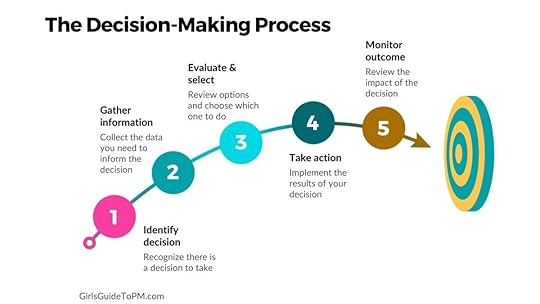 4. Trend analysis
4. Trend analysisTrend analysis studies past employment resource requirement patterns to predict future needs. The purpose is to identify trends that might continue. For example, an annual support maintenance contract will likely be renewed with the same terms and conditions. However, it can only provide an initial estimate.
5. Time seriesCreating a time series involves decomposing historical series into its components: trend, seasonal, cyclical, and random variances. When the various parts of a time series are separated, the subject under study can be known over the period, and projections can be made accordingly.
6. Ratio analysisRatio analysis is a forecasting technique for determining resource requirements using ratios between any causal factor and the number of employees. It assumes that productivity does not change and the number of people required is directly proportional to parameters such as sales volume. It works better in a shop-floor environment.
7. Scatter plotA scatter plot is a graphical technique that helps identify the relationship between two variables. Managerial judgment plays a significant role here. If you can forecast the level of business activity, it is possible to estimate resource requirements. Scatter plots are similar to ratio analysis but more visual.
ConclusionForecasting defines the probability of the happening of future events. The manager must consider all possible outcomes since resource planning is based on future demand. Therefore, forecasting is a critical element in the planning process. Every decision within an organization is based on forecasting and taking appropriate risks.
Businesses can choose to use any of the above forecasting techniques and customize them as per their working model. Though forecasting cannot check future happenings, it provides clues with a certain probability for the next action course.
Good resource forecasting can be a business game changer and significantly improve the profitability of an organization.
The Saviom SolutionSAVIOM has over 20 years of experience helping multinational clients manage their resources efficiently and effectively. With over 20 years of experience, this Australian-based MNC has a global presence across 50 countries and has helped 100+ clients meet their specific business goals. Saviom also provides tools for project portfolio management, professional service automation, and workforce planning software. So, SAVIOM can help your business to establish an efficient system geared toward your specific business challenges.
This article first appeared at Rebel's Guide to Project Management
October 19, 2023
Project Management Conferences in Asia Oceania and Africa 2023/2024
We have rounded up all of the project management conferences in Asia, Oceania, and Africa. Attending one of the conferences is a great way to network with other project managers, build your skillset, and experience career growth. Plus is is always nice to get out of the office.
Check out our lists other conferences around the world:
Project Management Conferences in the US and CanadaProject Management Conferences in the UKProject Management Conferences in EuropeDo you know of an upcoming event to add to the list? Please fill out this form.
July to September 2023PGCS Project and Program Management Symposium: Canberra, Australia, 22-24 August 2023This is the PGCS Symposium, and this year’s theme is Competent People Craft Project Success. This is advertised as a hybrid event bringing together the foundations of both project and program management working towards delivering successful projects.
PMI Africa Conference: Nairobi, Kenya, 10-12 September 2023The theme for this year’s PMI Africa conference is The Africa We Want: Together We Can. It is set to be held in person in Nairobi. It will bring together hundreds of project, program, and portfolio managers from around Africa and the world. It will feature opportunities to network and learn.
October to December 20232023 AIPM National Conference: Gold Coast, Australia, 29-31 October 2023The Australian Institute of Project Management holds an annual conference. The theme is Impact and Influence, with a focus on equipping project professionals with the skills to maximise their impact and influence in the workplace.
PMI Global Summit Series Asia Pacific: Singapore, Hong Kong, 7-8 December 2023This Global Summit series conference has a special focus on the construction industry and project management professionals. While this conference will look at project management through the lens of construction, it is open to all project leaders across all industries.
January to March 2024Dubai International Project Management Forum: Madinat Jumeirah, Dubai, 23-26 January 2024Entering its eighth year, the Dubai International Project Management Forum is the largest project management event in the region had a theme of Fostering Wellbeing. This learning and networking event brought together over 2,000 project managers.
NZ Project Management Conference 2024: Wellington, NZ, 22-23 February 2024After taking a bit of break, the PMI New Zealand Chapter is back to hosting their annual conference. The theme is Celebrating Diversity and will be a curated program that embraces the richness of perspectives and experiences within the project management industry.
This article first appeared at Rebel's Guide to Project Management
Project Management Conferences in the UK 2023/2024
Attending a project management conference is an excellent way to network with other project managers, build your skills, and improve your career. We have compiled a list of project management conferences in the UK so that you can stay close to home.
Looking to travel a bit further? We also have lists for project management conferences in the US and Canada, as well as project management conferences in Europe, Asia and Oceania.
Do you know of an upcoming event to add to the list? Please fill out this form.
October to December 2023Project Challenge: Manchester, UK, 12 October 2023Project Challenge is an independent event for project, program, and resource management. It’s part exhibition, part conference, held at the Etihad Stadium, Manchester so nice and easy to get to.
I spoke at the London event earlier this year, on behalf of Planisware, talking about Managing Multiple Projects.
The Future PMO: London, UK, 26 October 2023The Future PMO is a day devoted to PMO professionals and this year’s theme is The Final Frontier. This is a fun and unique conference that brings together experts across many industries to learn from each other. Network and meet with your peers, attend the keynote and morning sessions, and in the afternoon attend workshop sessions.
Once again, it is being held at the Novotel London West which is just a 3-minute walk from the Hammersmith Underground Station.
PMO Conference UK: Edinburgh, Scotland, 1-2 November 2023
Completely focused on all things PMO, this two-day event features expert speakers, an exhibition with PMO products and services, plus the chance to connect with other professionals in the industry. There is a sister event taking place in London in June.
I’ve spoken at a previous conference about Stakeholder Engagification. My presentation looked at the differences between management and engagement in a project-led environment and provide practical tips for “doing” engagement and encouraging participation through game mechanics. I also did a similar webinar version you can watch here.
I also attended the conference in 2018 and interviewed Geoff Crane. Watch the video below.
8th International Conference on Research in Management & Economics: Cambridge, UK, 15-17 December 2023This annual conference will take place at the University of Cambridge, Homerton College. There is both an in-person and virtual option for this academic conference.
January to March 202426th European Pharma & Biotech Project, Program, and Portfolio Management Conference: London, UK, 25-26 January 2024This PPM conference is focused on Project, Program, and Portfolio Management for Pharma & Biotech. The main takeaways will be about leveraging technologies for improved decision making, governance and risk management, and a deep dive into AI. The speakers will be covering the latest innovations. This is a great opportunity for learning and networking.
April to June 2024APM Project Management Conference: Coventry, UK, 5-6 June 2024The APM PM Conference will have a theme of Navigating Tomorrow: Future Skills for Project Professionals. Details are still being planned, but new this year, there will be a networking dinner on the evening of 5 June with a special guest providing a thought-provoking talk.
PMO Conference UK: London, UK, 18-19 June 2024Completely focused on all things PMO, the two-day PMO Conference features expert speakers, an exhibition with PMO products and services, plus the chance to connect with other professionals in the industry. There is also an event in November taking place in Scotland.
July to September 2024EVA Performance: Virtual / London, UK, 8-12 July 2024This year they are currently planning an in-person conference with an online component as well. It will be held at the BCS London office, as well as being presented on Zoom.
Details are still being planned, so watch this space for more information.
28th European Pharma & Biotech Project, Program, and Portfolio Management Conference: London, UK, 25-26 September 2024This PPM conference is focused on Project, Program, and Portfolio Management for Pharma & Biotech. The main takeaways will be about leveraging technologies for improved decision making, governance and risk management, and a deep dive into AI. The speakers will be covering the latest innovations. This is a great opportunity for learning and networking.
APM Women in Project Management Conference 2024: London, UK, 26 September 2024There are not many details yet for the return of the Women in Project Management conference, so watch this space. You can register your interest as well.
October to December 2024This article first appeared at Rebel's Guide to Project Management
5 Ways to Improve Communication
Effective communication is the backbone of any business because it means your team can collaborate with each other, understand customer needs, convey information, and support your credibility as a brand.
Some people seem naturally good at communication in a project setting, but even if you don’t feel confident in your ability, communication skills are definitely something you can develop and improve over time.
Being good at comms is partly about being aware of how we can communicate consciously and unconsciously, but also having the right tactics and tools. Here are 5 ways you can improve your communication skills.
1. Listen before you communicateActive listening is one of the most important techniques to use if you want to improve your communication skills.
The problem is that in any business environment, there is a distinct lack of active listening. Don’t let that be you.
(Are you reading this blog post while you are supposed to be in a meeting? Close the window now and focus on what you are supposed to be doing!)
There are four key components of active listening:
Paying attention (this is the hardest part I think! Put your phone down!)Understanding what is being saidResponding appropriately and with emotional intelligenceRemembering what is being said.Think about focusing on the speaker and asking clarifying questions to stay engaged in what other people are saying. Provide feedback (uh huh, nodding, paraphrasing what has been said) to demonstrate that you’ve understood what is being asked.
Make sure that you face the speaker, watch out for non-verbal cues, hold back from interrupting, don’t judge or jump to conclusions. Yes, it’s a lot to do. The more you do it, the easier it will become, and it’s all about managing your attention and choosing to focus it on the conversation you’re having right now.
Active listening is so important because it doesn’t just make the conversation flow effortlessly, but it instantly builds trust. We’ve all been in a conversation where we’ve dipped out for a few seconds and then someone asks a question and we hedge while we try to work out what we missed.
Be conscious of where your attention is, and practicing active listening by sticking to these four components of concentrating, understanding, responding, and remembering.
 2. Use your tools effectively
2. Use your tools effectivelyWe have a myriad of tools available to us for communication purposes. From MS Teams to Slack, Google Meet to project management systems, email, Skype, social media and customer service environments using a chat bot for business conversations. Each tool has its own communication unwritten rules.
For example, you’ve probably used a chat bot on a website before to get customer service help, and many tech projects involve rolling out AI-powered web bots or asynchronous ‘live’ chat with a real agent.
If you have a question that fits into one of the automated ‘journeys’ in the chat bot, you can get an answer quickly and efficiently (and sometimes frustratingly, let’s be honest!). If you use the bot to connect to a human, that human has very little time to build a rapport with you as you’ve already been in the communications process for some time.
Whatever tool you are using for text-based conversations, think about how you can set up template responses, mirroring the language the other person is using, playing back the key points in bullet points, clarifying the question – all techniques you would use in a spoken conversation.
Think about how tools reduce the noise in conversation or conversely, increase it.
For lots more about setting up team communications in your tools, take a look at my book, Collaboration Tools for Project Managers.
3. Practice empathy and emotional intelligenceEmpathy is about understanding somebody’s viewpoint or reasons – walking a mile in their shoes. When empathy is low, it can lead to misunderstandings, and the other person feeling like they haven’t been received in a compassionate way.
Empathy is partly about active listening, but it’s also about tuning into nonverbal communication, reading body language, asking others how they feel, and allowing people to express themselves completely without interruption. It’s almost a fast-track to trusted working relationships if you get it right.
Culture affects communication too, so consider what cultures you have in the team and how they are playing into how you engage with each other. Different departments can have different working cultures.
Developing emotional intelligence helps you tune into other people’s feelings, and your own, so you can more sensitively respond to a situation. The goal is to get a better response from the communication, whether that is for the person to take action or to provide a status update or whatever. The more we can anchor ourselves in the situation and respond appropriately, the more likely it is that we can elevate the performance of our colleagues too.
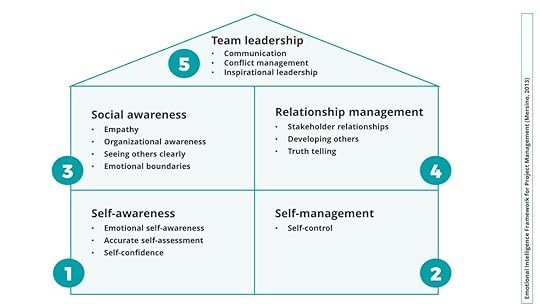 Emotional intelligence framework from Anthony Mersino’s book, Emotional Intelligence for Project Managers (2nd edition)4. Watch for non-verbal cues
Emotional intelligence framework from Anthony Mersino’s book, Emotional Intelligence for Project Managers (2nd edition)4. Watch for non-verbal cuesI mentioned non-verbal cues above, but what are you looking for exactly?
Look out for lack of eye contact, fidgeting, eye rolling, being on their phones or otherwise signaling that they are importantly busy. These paraverbal communication clues would point to the person not wanting to be there.
People getting up and leaving the room might signal you’ve been going on too long and they need a comfort break.
Someone opening their mouth and closing it again, or sitting forward, might signal that they want to speak but are struggling to get into the conversation – as the facilitator you can create an opening for them.
Spotting the non-verbal cue is only the start. Then you have to decide what to do with that information. Do you call out the manager on his phone? Do you call a break? Do you gently find a way to stop the people who are taking all the air time and let quieter members of the group speak?
5. Be clear and conciseFinally, think about how you can make your communication clear and concise.
Stick to the point – which means you have to know what it is first!
Listen for the filler words (so, er, um) that you put into your everyday speech. Do you repeat the points several times in different ways (I do). Clarity is about minimizing the number of ideas so people can understand your meaning and you engage stakeholders effectively.
Minimize the amount of assumptions people have to make about what you are saying, preferably down to zero. Structure your message so the important points are at the top and you aren’t burying the lede. Ditch the jargon.
Project professionals spend almost all their days communicating, whether that’s in writing short message, in meetings or in presentations. The clearer and more effective your communication, the better your overall project results will be. Plus, you’ll look good, and you’ll come across like the safe pair of hands that your project sponsor needs you to be.
The bottom lineImproving your communication skills is not that hard if you really want to. Be prepared to use your attention where it’s most needed, and really listen to what’s going on around you. I find making notes during the conversation helps, even if there is no need to send out minutes.
Focus on your internal customers and make communication a conscious part of your day, not something you do while you’re also doing something else. You can do it!
This article first appeared at Rebel's Guide to Project Management
October 18, 2023
Project Management Conferences in Europe 2023/2024
Looking for project management conferences in Europe to attend? We have compiled a list specific to Europe for events where you can network with other project managers and improve your skills.
We also have lists for project management conferences in the US and Canada and project management conferences in the UK, Asia, and Oceania.
July to September 2023Bridge 2023: PM & PMO Conference: Vilnius, Lithuania and Online, 21 September 2023The annual event has a theme of Projectized-Digitized-Connected and will be dedicated to a sustainable way of working this year. This hybrid conference will bring together project management professionals for education and networking.
34th IPMA World Congress: Sevilla, Spain, 21-22 September 2023The IPMA World Congress is a two-day in-person conference. It will be held in Spain this year, with a full agenda to come.
The Program Committee of the Congress includes more than 30 experts from Europe, Asia, America, and Australia, heads of large companies, leading scientists, and practitioners representing various areas of management, economics, and digital technology.
11th International Scientific Conference on Project Management in the Baltic States: Riga, Latvia, 28-29 September 2023The theme of this year’s conference is Practice and Perspectives. They are gathering to discuss the results of scientific research in project management issues, as well as networking and establishing new contacts.
October to December 2023Global Scrum Gathering: Amsterdam, 9-11 October 2023The Global Scrum Gathering is an all-levels conference. The conference is three full days of keynotes and break-out sessions to learn best practices and creative applications of Agile and the Scrum framework with professionals from around the world.
January to March 2024Women in Project Management (WiPM) Summit: TBD, March 2023The Women in Project Management event for 2024 has not been planned yet, but watch this space for details. We will update as they become available.
PMI Sweden Passion for Projects: Stockholm, Sweden March 2024The PMI Sweden Chapter holds this annual event with inspiring speakers, professional colleagues, and companies in different sectors gathered with the goal of sharing their knowledge and experience in project, portfolio, and program management.
April to June 202427th European Pharma & Medtech PPM Conference: Basel, Switzerland, 22-23 May 2024This PPM conference is focused on Project, Program, and Portfolio Management for Pharma & Biotech. This year’s theme is New Ways of Working, and speakers will be covering the latest innovations. This is a great opportunity for learning and networking.
IRNOP Conference 2024: Stockholm, Sweden, 11-14 June 2024The 15th IRNOP Conference will be held in Stockholm with a theme of Project Management in a Sustainable Future. They are currently accepting papers through 31 January 2024.
This article first appeared at Rebel's Guide to Project Management
October 10, 2023
Generative AI for Project Managers (PMI Course Review)
If you’ve been on LinkedIn recently, you’ve probably seen someone in your network sharing that they have earned the Generative AI Overview for Project Managers badge by completing a PMI training course.
Is the course worth your time?
The short answer is yes.
You can complete the course in an afternoon.
It’s free (for the moment).
It’s nicely put together.
It includes a prompt engineering guide which you’ll definitely find useful if you are planning to use ChatGPT on any level.
Ready to do the course?Head over to the PMI website, register for a free account.
Navigate to the store once you are logged in and search for the Generative AI course.
Not quite ready? Read on for my review.
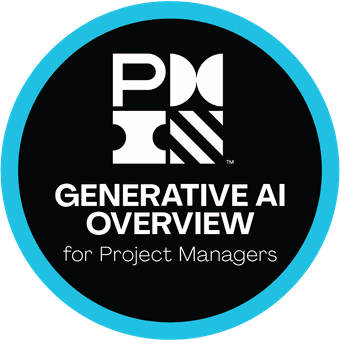 Who the Generative AI for Project Managers course is for
Who the Generative AI for Project Managers course is forI think most project managers, in all levels of job, would benefit from this training, unless you class yourself as a total AI expert already.
It’s not aimed at any particular job type or role, and you don’t need any project management experience.
Do you need to do it? Probably not yet. But AI is a growing area of interest across many business disciplines, and project management is no different.
I spoke to Sam Sibley, Global Head, Emerging Products & Innovation for PMI to ask his view on whether project practitioners should care about AI.
“AI is on the rise, with Goldman Sachs reporting AI investment could be near $200 billion globally by 2025, making it clear that project managers need to embrace and lead this change,” he said. “With the right combination of how to best use AI on projects and the project manager’s human touch, you can do more than ever to meet every challenge that comes your way and be at the forefront of this new AI-enabled world of work.”
Well, I’m interested in being at the forefront, if only because it keeps me relevant and employed, and able to hold a conversation about AI with my peers! Don’t get left behind: AI really is a topic it’s worth spending an afternoon getting to know more about.
What the course coversThe course is made up of 6 modules.
Introduction to GenAISolving PM problems with GenAIVoice of the PMChatGPT LabAI Tool LibraryKnowledge checkEach module starts with an overview of the topic. Close the popup to progress through the module.
Introduction: There are 3 videos, each 2 minutes long. You’ll get through this quickly.
Solving problems: This module links how you can use GenAI to the PMI Talent Triangle.
Voice of the PM: There are 3 short videos which are interviews with project managers about how they use it (Kristian’s is really interesting!).
Lab: This section includes examples of how to use it, with sample tasks and the ChatGPT output created. You can also download the prompt engineering guide which is great.
Tool library: Not sure where to start? The tool library covers tools, plugins and resources you can use for planning, time and cost management, risk management, workflow management, prototyping and more. You can download the full list too – save this for when you need it!
I did wonder whether the tool library handout was sponsored by any of the products mentioned. There are many more tools out there and there was no indication of how the tools had been chosen. Use the list as a starting point, because it will give you the terminology you’ll want to use when researching other products.
You will pass the knowledge check easily if you have been through the course materials and listened to the video.
What I liked about itI learned something. I hadn’t used ChatGPT before and the course gave me the confidence to give it a go.
It’s tight – there is no fluff and the content is put together to give you exactly what you need to go away feeling like you’ve learned something new.
The course is specifically targeted at project professionals, which I liked. There are plenty of generic resources for generative AI, but project management has some specific use cases and this training will help you understand how to get the best out of it.
Plus, PDUs! It’s one of the fastest ways to earn PDUs. It’s free and the PDUs are pre-approved.
What I think was limiting about the courseThe videos are less than 5 minutes long – some of them are only 2 minutes. While that’s good because you can get through the content quickly, I wish some of the case studies had taken longer to get into more detail.
The examples, and the prompt engineering info was very much focused on ChatGPT. There are other tools out there, and the course does mention Google’s Bard and Anthropic’s Claude in passing.
There is no analysis presented about which tool is better for project managers. In blogging circles, Claude is what I’m hearing as the better tool as it has a larger context window. But ChatGPT is easily available, and is probably what most novice generative AI users are going to get into first.
When you and your organization feel it’s appropriate to level up, maybe it will be worth looking at other tools.
Getting startedFirst, you’ll need a free PMI account. (If you already have one, skip this step.)
Login, then navigate to the Store. Register for the course and go through the checkout process.
Go to your myPMI dashboard. Find the course in the Course Library and get started!
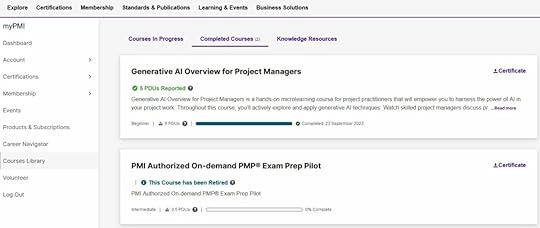 PMI courses catalog showing my coursesHow many PDUs do you get for the Generative AI for Project Managers course?
PMI courses catalog showing my coursesHow many PDUs do you get for the Generative AI for Project Managers course?You’ll get 5 PDUs for taking the course (4 for Ways of Working and 1 for Business Acumen).
My takeawaysMy takeaways from the Generative AI Overview for Project Managers are below.
I think the idea of ‘human in the loop’ is really important, and worth keeping in mind as we plan out how to use it in project management. We can’t take humans out of the equation – at least not yet! The human in the loop idea means that we need to take the output of generative AI tools and apply subject matter oversight and analysis to review it.
Check out AI – just get started with playing with ChatGPT and see how it works!
If this training doesn’t feel like a good fit for you, or you want to take your learning further by doing some more in-depth training, I have listed some alternatives to the class below.
Alternative AI training coursesIntroduction to Artificial Intelligence (IBM).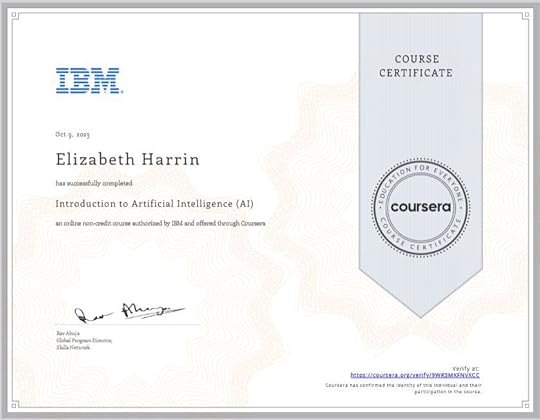
IBM’s Introduction to Artificial Intelligence course is online training with a free 7-day trial. If you put enough time into it, I would suggest that you could pass the course in that time.
It is not project management specific, but it provides a good overview of Generative AI and may business use cases. It also covers other terms and tools you’ll come across like machine learning, neural networks, natural language processing and deep learning.
I found this course more in-depth than the PMI course. It helped me understand the world of AI more broadly, although some of the content felt repetitive. It has a good focus on ethics.
AI for Everyone (Deep Learning)I haven’t personally taken the AI for Everyone course from Deep Learning but I know other project managers who have and the feedback has been excellent.
It covers AI terminology, building AI projects, introducing AI into your company and creating a strategy and it’s very business focused. It’s not technical, which makes it suitable for project professionals.
The AI Ladder: A Framework for Deploying AI in your Enterprise (IBM)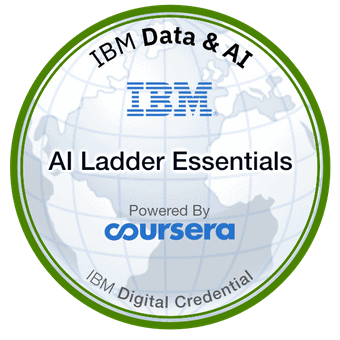
IBM’s AI Ladder course is interesting because it takes a non-engineering approach to how to implement AI in your organization. It’s good for people who want to see the big picture and understand the strategy behind making sure the AI toolsets implemented are actually fit for purpose.
Your next stepsI would suggest signing up for a free PMI account. You get access to more than the Generative AI course: there are a lot of resources on the PMI website.
IBM's Introduction to Artificial Intelligence (AI)
The brains at IBM have put together an accessible course that provides in-depth but beginner-friendly training on AI at work.
Learn moreWe earn a commission if you click this link and make a purchase, at no additional cost to you #ad
The AI Ladder: A Framework for Deploying AI in your Enterprise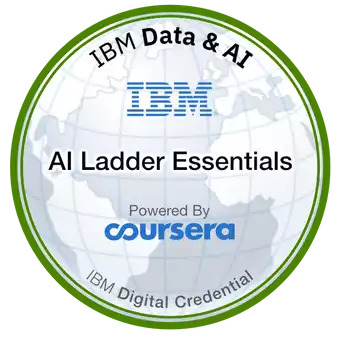
A quick course that shows you how to organize, analyze and infuse AI across the organization in a structured, efficient way.
Learn moreWe earn a commission if you click this link and make a purchase, at no additional cost to you #ad
Generative AI Overview for Project Managers
A quick and easy course aimed at project managers. Specifically focused on generative AI applications in projects, mainly ChatGPT.
Learn moreWe earn a commission if you click this link and make a purchase, at no additional cost to you #ad
AI For Everyone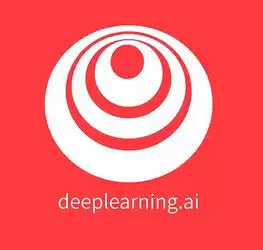
Popular training course that focuses on helping you understand the benefits and ethical challenges of AI at work. You'll be equipped to design or input into a strategy after taking this course.
Learn moreWe earn a commission if you click this link and make a purchase, at no additional cost to you #ad
This article first appeared at Rebel's Guide to Project Management



